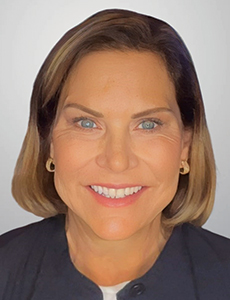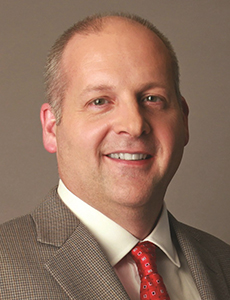From Comorbidities to Catastrophes: Breaking Down Complex Claims for Older Workers

While early retirement and the “gray tsunami” have been part of our working lexicon for the last several years, the narrative seems to be shifting. That’s because, as studies have shown, more and more older workers are staying longer—and even “unretiring” in some cases.
“They’re prolonging their retirement,” said Angie Goins, RN, senior case manager, catastrophic product manager, Broadspire. “We have an aging population that’s higher than it’s ever been, and we have a lot of workers who have retired, and then they have trouble surviving financially, so they’re forced to go back to work. Or they do look at their finances before they retire and they realize [they] can’t survive like that.
“So, we see people now 65 to 80 working in an active workforce.”
One report estimates that by 2028, more than a quarter of the workforce will be 55 or older.
Whether the reason be inflation or as a means to supplement their income and savings, these older workers staying in or returning to the workforce could pose a significant challenge for the workers’ compensation industry.
“As we get older, we have less stamina, we have less muscle mass, less strength, less endurance and flexibility, and all of those things can put us at a higher risk for getting injured in the first place,” said Dr. Robert Hall, corporate medical director, Optum Workers’ Comp and Auto No-fault.
A Rise in Complex Claims
It’s important to note that having an aging workforce does not inherently mean workers’ comp claims will be complex. But the possibility of having a complex claim does increase, due to a number of factors.
For one, as the human body ages, recovering from injury can naturally be prolonged.
“The older we get, the more difficult it is for the recovery process. The long-term impacts of a significant injury on joints and other body parts as we age can become a serious claim,” said Greg Larson, associate vice president, workers’ comp claims, Sentry.
“[Older workers] have a delayed time healing; they are much more prone to infections. If they have skeletal surgery, they’re more prone … to general infection that they may pick up at the hospital, which is going to compound the whole recovery process,” added Goins.
Then, there’s also the social aspects of an injury.
“There are a number of factors that can contribute to a claim being considered complex, certainly the presence of comorbid or chronic conditions, but then also things like social determinants of health,” said Tammy Bradly, senior director of clinical product marketing, Enlyte.
“Examples there include access to healthy food, having a support system, financial difficulties, the neighborhood in which someone lives, and even poor health literacy. These all fall under that bucket of social determinants of health,” Bradly said.
Any one of these external, non-injury-related components can complicate the healing process for an injured worker, requiring more therapies—physical, occupational or otherwise—and prolonging the claim in the process.
Comorbidities Abound
Another complicating factor is comorbidities—diseases or conditions that existed prior to a work-related injury.
Diabetes, hypertension, high blood pressure and other similar ailments are more likely to develop as a person ages. Then there’s also the possibility of those more nebulous conditions, like anxiety disorders or depression, that can exacerbate the healing process for an injured worker.
“Focusing on the comorbid conditions,” said Dr. Hall, “there are those conditions like high blood pressure, heart disease, kidney disease, diabetes and COPD that, unfortunately, are conditions that become more likely to develop as we age.”
Any prescriber who sees a pre-existing condition on an injured worker’s chart is going to be conscious of the medications given to the patient due to drug interactions. For example, a prescriber might not recommend an anti-inflammatory medication for someone with high-blood pressure, because such drugs could increase blood pressure.
That in turn means looking at the specific drugs available for that specific worker’s ailment and conditions.
“I have this mantra when thinking about managing claims, which is, make sure that the right pharmacy drug is going to the right patient at the right time,” said Julie Black, senior clinical account executive, MyMatrixx by Evernorth.
“The sooner that we can get someone managed on the correct medications for their injury and for their comorbid conditions, and make sure that they’re adherent to those medications, that will create the most positive outcome.”
Factoring in Catastrophic Claims
Not all complex claims are catastrophic, but all catastrophic claims can be called complex.
For the older workforce, a catastrophic injury on the job can be devastating, especially if they are working as a means to combat financial strains, inflation, or supplement income.
As noted, aging can prolong the healing process. Should an older worker suffer a traumatic brain injury or an amputation, healing will only be that much more difficult.
“[In catastrophic claims] the severity of the injury will dramatically change an injured worker’s life moving forward,” said Sue Mellody, VP, workers, compensation managed solutions, Liberty Mutual Insurance & Helmsman Management Services.
“This is something that needs deeper attention and the right resources. The other piece is in understanding some individuals with such injuries may not return to work or will need significant support, from a home modification or durable medical equipment standpoint,” she said.
“When a claim starts out like a catastrophic injury, we know that that’s a complex claim just by the nature of the injury,” added Dr. Hall. “And the challenges that that injured worker is going to face, young or old, could impact recovery, improvement of their function, or getting back to the things they enjoy doing.”
With catastrophic claims, too, employers could see secondary claims, which also compound the issue at hand.
“Sometimes, when there is … a catastrophic injury, it’s not just the injured employee that’s affected by it. If other employees see something catastrophic, we want to be able to provide support to those bystander employees to prevent them from potentially presenting a psychological claim,” said Melissa Burke, VP, head of client experience and risk control, AmTrust Financial Services.
Managing the Medical Side of Complex Claims
So, in order to get a handle on complex claims for the aging workforce, perhaps one of the most important elements is in medical management. With physiological factors like comorbidities and the natural wear-and-tear of aging bodies, getting the right medications, therapies and healing strategies in play early can be the turning point for a claim.
“Getting medical management right on the front end is extremely important and has the downstream effect of improving the [worker’s] overall health outcome. We see more efficient utilization across multiple health components, not just medication, but maybe as a result of getting the right track initially, fewer office visits, fewer emergency room visits, and has the added benefit of coming back to functionality, which brings employees back to work sooner, allowing them to be more productive for their employer,” said Paul King, president, MyMatrixx by Evernorth.
“Moving the claim faster through the system reduces workers’ compensation costs and the administrative burden of the claim,” added John Meder, national risk management practice leader, Risk Strategies.
“Early medical management can speed up claim resolution and get the employee back to work a lot faster. There’s also the benefit of ongoing support for the injury that they had, which … helps avoid litigation or an employee reaching out for legal assistance,” Meder said.
Getting medical management right also means communicating the needs of the individual early on. When it comes to complex claims, there might be multiple types of medical management necessary, as well as different types of physicians involved—not to mention those specific for a workers’ comp claim.
“When there are so many different types of medical management, different types of physicians involved, different facilities,” said Burke, “it’s so important for coordination and communication so that we’re not having any delays, misunderstandings, or miscommunication on the medical management.”
“You have to have all the information upfront [so the team can] sit down and discuss what the course of treatment is going to be, what the progression is going to be, what kind of rehab they’re going to need, what kind of in home care they’re going to need,” said Goins.
Experts agreed the final outcome of the claim is dependent on the medical management coordination upfront.
A Dream Team
Of course, no medical management regiment is complete without its workers’ comp team and the tools they use to keep claims moving forward and injured workers on track toward recovery.
“It’s really a multi-part stakeholder relationship. You’ve got the patient, which is the claimant; you have their employer, which is the workplace environment. You have the claim paying entity, and then you have the ancillary medical intervention components. All of these working together is important to the claim’s outcome,” said King.
Here is where frontline workers really come into play for injured workers. Case managers, whether they be field case managers, NCMs or telephonic, often hear from the injured worker first. They are the people coordinating between all stakeholders.
“When you get injured on the job, and it varies by state, there is a lot that’s thrown at that person, and the jargon that we use is not easy to understand,” Jean Feldman, senior director of managed care, Sentry. “They’re concerned about the immediate impact to their finances. How are they going to get paid? State forms may have terms and wording that injured workers don’t know what they mean.”
Further, “older injured workers may not question their physician or understand their treatment plan. They need to have a nurse case manager available to be an advocate who can educate and make sure the injured worker understands their treatment plan,” she said.
“Nurse case managers will complete what we call a holistic assessment, which looks at the physical condition, the mental condition and the social condition of that injured employee,” said Bradly. “They will take all of those factors into play, and that includes assessing and learning about any type of chronic condition or comorbid condition.”
This sets the injured individual up for success, because all the factors that can complicate a claim or have it deemed “complex” are noted early on. Then, as Bradly continued, the case manager is in the prime position to communicate these needs to the employer, the physicians, the workers’ comp insurance team.
Technology in Action
It would be remiss to not mention the technological advances aiding the workers’ comp team. Artificial intelligence, data analytics, and similar tech tools have an important role in keeping complex claims moving forward.
“We can look at what’s transpiring with each client through using AI and predictive analytics,” Meder said. “The AI sorts large sums of data on various workers’ comp claims for that individual employer, and from that standpoint, we can take a portfolio of claims and predict what can transpire from those claims.”
This enables employers to have a much deeper, more rich understanding of the injuries impacting their employees and how they can improve upon the recovery process based on past experiences.
It also acts as an indicator of what roles, positions or tasks are causing more frequent injuries to their older workforce.
Aging Gracefully
At the end of the day, keeping older workers safe on the job is paramount. Avoiding injury altogether is every workers’ comp experts’ goal.
Accidents happen; knowing how to address them is key. But prevention is worth its weight in gold.
“When there’s a very strong emphasis on safety and appropriate training, that becomes a critical role in helping to prevent injury in the first place,” said Dr. Hall.
“Another factor is helping to make sure that the workforce is well rested. A lot of people are working overtime. A lot of people are working more than one job. That puts them at a higher risk of injury, too, when they’re just not rested,” he said.
“It’s really important to have a good relationship with your workers’ compensation carrier for many reasons but prior to a claim, risk control is key,” added Burke. “Being able to bring in risk control services, allowing risk control to join safety meetings, and be part of their team will help to prevent injuries. A carrier can provide resources for employers to have weekly team meetings where they can talk about safety and make it really part of their culture. We can help to support that.” &












